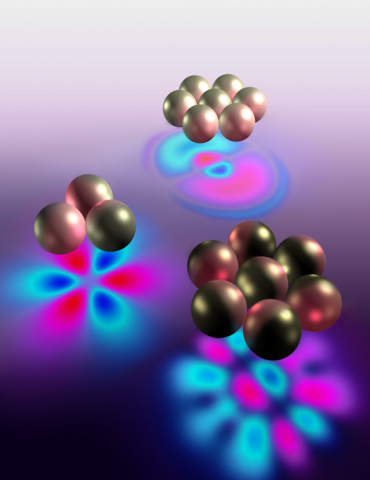Plasmonics

Infrared Nanophotonics
We are investigating the physics and applications of novel nanomaterials in the mid-infrared. Recently, vacuum filtration has enabled the self-assembly of densely packed films of aligned carbon nanotubes. As large-area, solution-processed materials with tunable plasmonic, excitonic, and epsilon-near-zero behavior, these are model systems for nanophotonics. We have showed that the extreme anisotropy of aligned single-wall carbon nanotube films enables their use as hyperbolic metamaterials, with different signs of the dielectric permittivities along different axes, across the mid-infrared. We are continuing to investigate novel effects in aligned carbon nanotube films and their applications. Our approach combines electromagnetic simulations and experimental infrared spectroscopic measurements of fabricated devices.

Integrated Plasmonic Lenses
Edge emitting quantum cascade lasers (QCLs) are technologically important in a broad range of applications, including sensing, free-space communications, and metrology. However, these devices suffer from large output divergence due to the limited aperture defined by the laser facet. We propose to integrate a plasmonic lens directly onto the facet of an edge-emitting QCL, which dramatically increases the aperture size and therefore reduces beam divergence. Theoretical analyses and experimental demonstrations indicate that the output divergence angle can be decreased by over one order of magnitude. This approach will enable robust, compact, and collimated sources of infrared and terahertz radiation.

Self-Assembled Plasmonic Molecules
Plasmonic nanostructures are building blocks for metamaterials and metasurfaces, and their ability to localize electromagnetic waves at the nanoscale make them well suited in sensing applications. We demonstrate that clusters of metallic nanoshells, which are gold-coated silica colloids, serve as a general platform for plasmonic mode engineering. By tailoring the number and distribution of nanoshells in a cluster, a broad range of electric, magnetic, and Fano-like resonances can be realized. These clusters can be self-assembled using various mechanisms available in the soft matter community, including DNA-based and capillary force assembly. We envision that plasmonic systems based on self-assembly can generalize to fully three-dimensional architectures, utilize a wide range of chemically synthesized colloidal shapes and materials, and combine with top-down lithographic processes to produce new classes of optical device architectures.
